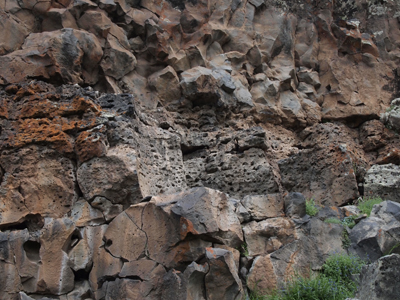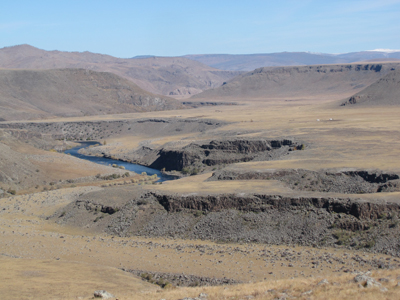Disciplinary Studies

Vesicles in basalt flow, Hangay Dome.
Timing of Processes
geochronology and thermochronology
Within and near the Hangay Dome, relatively few of the over 200 recognized Cenozoic volcanic centers and associated flows have been dated in a systematic fashion. Ages of these mafic lavas range from 5 Ka to over 30 Ma, and the occurrence of these rocks across large portions of the central and eastern Hangay dome at all elevations provides an exciting opportunity to obtain timing control on both landscape elevation and volcanism. Ages of the flows in combination with our petrological and geochemical studies can document the chemical evolution of the source region through time and can permit us to estimate the volume of erupted products through time as well. Dating of flows is essential for our work in vesicular basalt and stable-isotope paleoaltimetry because eruptive age is required to associate a time with an elevation estimate and in greater detail, determine rates and episodicity of surface uplift. Our geomorphic studies also will benefit from age control that we can provide for both constructional and degradational landscapes. Finally, because the lavas are erupted directly on the presumed Late Cretaceous erosional surface found on the Hangay Dome, older samples will provide minimum constraints on when basement rocks actually reached the surface, providing control on both the age of this surface and the erosion histories that we seek to establish using thermochronology.

